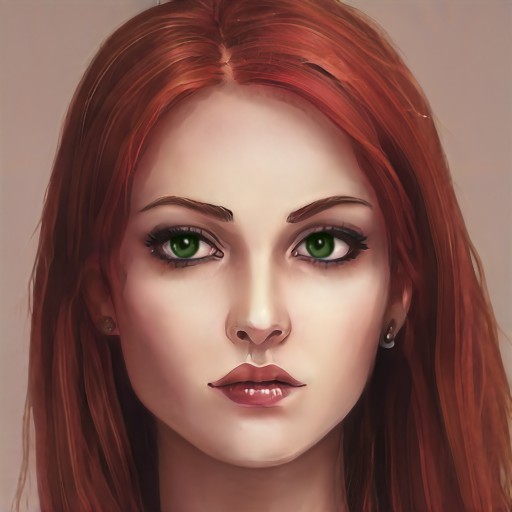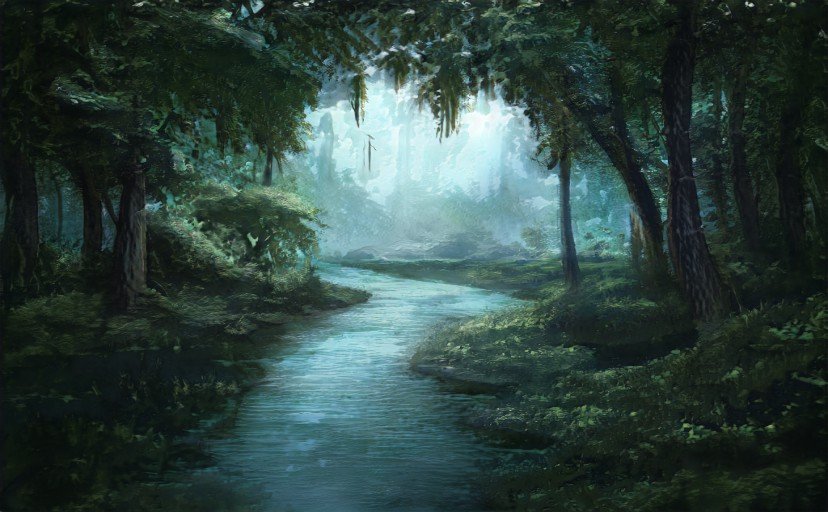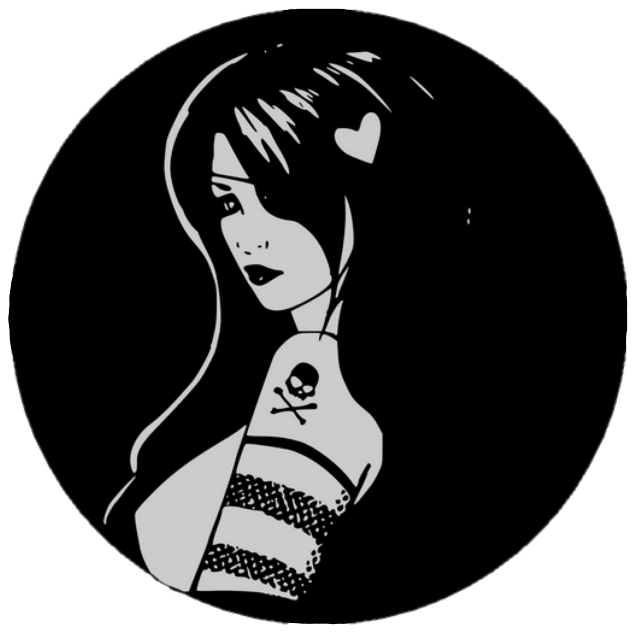The Black Unicorn
The Last Major Enemy of the Goddess
Ambient sounds courtesy of tosha73 and EminYILDIRIM
Greetings to those below. I am Death, though Azrael is the name I love. Speaking of love, I believe that’s what a lot of this will be about today. Love and hate. There is a fine line they say, and I can confirm in my own life it has proven true. So I think it has also proven true for Vānima the Veldriss and Anāriel the Black Unicorn.
But, before I tell you about Anāriel herself, let me first tell you about the myth. Let me first tell you about the monster, because that is what the people believe. It is what the Veldriss told them. Most importantly, it is what the Veldriss believes. This ghost story lives in the Veldriss’s heart as truth. If only because nothing else can.
The Myth
First of all, you must understand that in the world of Orosta, the unicorn is not a symbol of innocence and purity as it typically is where you hail from, those below. The unicorn, as far as Orostians are concerned, is the penultimate symbol of evil. It is also a symbol of corruption, because it is true that a tale exists of the white unicorn. Rather than me telling it, I will quote Vānima the Veldriss’s own words on the subject:
From this original tale of the white unicorn, and even the tale of the white unicorn becoming black as a sign of the end, we gained various legends of black unicorns. This is how the term “black unicorn of the family” came about. I believe you have a similar term, those below. The black sheep. So it went on until, eventually, we gained the terrifying mythos of the Black Unicorn in the form of Anāriel Anastil. The Veldriss is and always has been keenly aware of Orostian history. The people would have immediately understood what labeling Anāriel such a thing was intended to mean: Ultimate abhorrence that should be met with nothing less than terror. With the added implication of her being an outcast, it was made completely clear to even the smallest child that there was a rift of cosmic proportions within the goddess’s family. Remember I said, there is a fine line between love and hate. Here is that line.“The unicorn is anathema, a demon from the void, though it was not always so. Once it was beautiful. The undine scribes tell how it happened. A rogue star fell on the unicorn and possessed it, twisting it into a monster. It screamed as it was dragged into the void, but as it fought, it pierced its horn inside a tree. The tree bled, and magic poured out of the bark in sticky black gulps of tar. The unicorn battled to get away, but it was trapped. It drowned. When it finally had breathed its last, its ruined corpse crawled out of the blackened pool, and so it was anathema. Now it roams forever alone. Forever broken. The unicorn is white, a mangled echo of what it used to be, but when it turns black, they say it will be a sign of the end—the end of all things.”—Vānima the Veldriss
The Monster
What, then, do the people believe about the Black Unicorn? Why is she seen as such a terror? Well, I will use the Veldriss’s own words again:
The Veldriss: “Do you know what they call this white unicorn, Kieran? They call it the Rogue Star. He is the opposite of Le Sair, the embodiment of strife and discord. He is his singular enemy. At least, according to the legends. Do you see now the similarities?” Kieran: “Anāriel is your Rogue Star?” The Veldriss: “Look at you starting to understand. Very good, dear.”Seen as the ultimate enemy of the goddess, the Black Unicorn stands in the way of every hope the Veldriss represents to her adopted children. Being able to begin anew, to recover from the slaughter of the Battle of the Royals Dead, to finally rebuild the world as the Veldriss has promised. All of that would fail. The world would die yet again thanks to the Black Unicorn, and everything the Veldriss’s children have fought for all these years would be lost. All of it would have been for nothing. Staring into the void of hopelessness, despair, and eternal, permanent loss is perhaps the most frightening thing to a people whose religion was built by the grieving hearts of orphans. The psychological and emotional trauma of what happened before happening again is unthinkable. The Black Unicorn is hated almost as much as she is feared for even representing the idea. Combine this with the tales themselves. Tales of the Black Unicorn stalking the shadows, snatching runaway children loyal to the goddess and devouring their souls. Tales of her uniting with the scáth to cause nightmares and death. Tales of a skeletal horse dripping black tar as a living, shifting darkness swirls around her with creeping malice. Tales of her setting herself on fire and destroying entire towns simply because she can. In fact, that one actually happened just recently with the town of Clearbrooke.—Vānima the Veldriss and Kieran Quinn discussing the Black Unicorn
A Quick Clarification
by J. L. Gryphon via Artbreeder
But surely all this can’t be true. Certainly this seems like religious propaganda masquerading as truth. What better way to control the masses than to give them a boogeyman to fear?
Well, before I proceed further, let me anticipate the implication I no doubt made in the beginning of this. I said the tales of the Black Unicorn are what the Veldriss believes to be true, which might create the impression the tales are in fact false. But, like everything else we have discussed regarding the Religion of Velherr, there is always at least some truth to be found in everything the Veldriss has told her adopted children. That makes it all the more difficult to deny because, as it is with many things (not everything) the Veldriss has said, you are eventually forced to admit, “She’s not wrong.” I wouldn’t necessarily say she is right about various things either, but . . . she’s not wrong.
With that in mind, though it is unfortunate to say, there is indeed some truth to be found in these tales. There is also self-deception masquerading as truth. There are even a few honest lies. Hmph. Unravel that contradiction as you will, those below. Believe it or not, but I’ll give you a hint and say the more fanciful the tale, the more chances it has of actually being real. Just . . . not in the way you might expect, perhaps. There are a few additional players in all this who are not getting their . . . due attention, shall we say? Soon, though. Very soon now.
Where Is the Black Unicorn?
But this brings us back to the beginning, to that first tale of the white unicorn. Because it is said when the unicorn rides from the east, it will mean the end of all things. The wilds of the east is where the Black Unicorn is now, and that phrase applies as much to her as it used to apply to the white unicorn. Hmph. How often times change, how often they stay the same, and how often there is simply the illusion of change if only to better conceal the lack of it and maintain the status quo. There is only so long an illusion can last, though, which is why I say the world will change . . . one way or another. I suppose if you wanted to hurry that change along, those below, you could travel down the River of Rhye, brave those untamed eastern jungles, and attempt to search for the Black Unicorn yourself. Convince her to take that final ride. But with everything I have said about her, and with so much left unclear as to what is truth, self-deception, lies, love, or hate, I suppose it’s a fair question to ask: Would you really want to meet her? Hmph. I know more people than I can count who would say no. In fact, I think even Anāriel herself would say no. But that’s another story.
Book Information
To learn more, hop on over to the books page OR hop on over to the teaser and get a sneak peek of Chapter 1! For more articles like this one, have a peek at my Worldbuilding Journal and explore Orosta.
Related Articles
Religious Significance
Religious figure
Alternative Names
The Religion of Velherr
The Children of Le Sair
Honorary & Occupational Titles
Former
Elf
Believed Spiritual Species
Unicorn
Ethnicity
Sithuwaye
Rhyonian
Date of Biological Birth
The Month of Chal, Day 24, 14819 NS
Believed Spiritual Birth
Unknown
Biological Parents
Ethäes Anastil
Xanāra Anastil
Believed Spiritual Parents
Unknown
Biological Siblings
Vānima the Veldriss
Seeré Anastil
Believed Spiritual Siblings
Vānima the Veldriss
The Lost Prince
Spouses
Khazar Anastil
Birthplace
The White Citadel
Believed Spiritual Birthplace
The Realm of Velherr
Current Residence
The Wilds of the East
Related Species
Elves
Tressians
Jeenta
Undine
Hags
Hok
Rill
Gigantes
Related Ethnicities
Rhyonian
Zurrinaih
Sithuwaye
Related Myths
The Morsus Swamp
The Ripping
Religious figure
Alternative Names
- Anāriel Anastil
- The Monster in the East
- The Demon in the East
- The Devil in the East
- The Last Major Enemy of the Goddess
- The Black Ghost
- The Black Wraith
- The Black Witch
- The/That Black Horror
- The Anathema
- The Abominations’ Pharota
- The Goddess’s Bane
- Vānima’s Black Stain
- Destroyer of Clearbrooke
- Destroyer of Rhye
- Destroyer of Orosta
- Night Stalker (by children)
- Child Snatcher (by children)
- Orphan Gobbler (by children)
- Tar Dripper (by children)
- The White Unicorn (confused)
- The Rogue Star (confused)
The Religion of Velherr
The Children of Le Sair
Honorary & Occupational Titles
Former
- Her Highness Phrasai Anāriel of the Royal House Anastil
Elf
Believed Spiritual Species
Unicorn
Ethnicity
Sithuwaye
Rhyonian
Date of Biological Birth
The Month of Chal, Day 24, 14819 NS
Believed Spiritual Birth
Unknown
Biological Parents
Ethäes Anastil
Xanāra Anastil
Believed Spiritual Parents
Unknown
Biological Siblings
Vānima the Veldriss
Seeré Anastil
Believed Spiritual Siblings
Vānima the Veldriss
The Lost Prince
Spouses
Khazar Anastil
Birthplace
The White Citadel
Believed Spiritual Birthplace
The Realm of Velherr
Current Residence
The Wilds of the East
Related Species
Elves
Tressians
Jeenta
Undine
Hags
Hok
Rill
Gigantes
Related Ethnicities
Rhyonian
Zurrinaih
Sithuwaye
Related Locations
Related People
Related Organizations
The Morsus Swamp
The Ripping











Comments